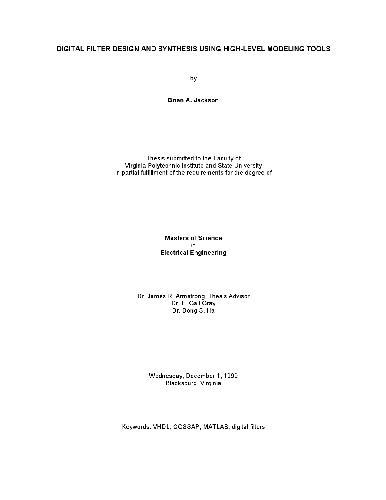Jackson B.A.
The purpose of this thesis is to formulate a technically sound approach to designing Infinite Impulse Response (IIR) digital filters using high-level modeling tools. High-level modeling tools provide the ability to build and simulate ideal models. Once proper validation is complete on these ideal models, the user can then migrate to lower levels of abstraction until an actual real world model is designed. High-level modeling tools are the epitome of the top-down design concept in which design first takes place with the basic functional knowledge of a system. With each level of abstraction, validation is performed. High-level modeling tools are used throughout industry and their application is continually growing especially in the DSP area where many modes of communications are expanding. High-level modeling tools and validation significantly address this complex expansion by utilizing an ideal representation of a complicated network. |
Table of contents :
Electrical Engineering……Page 1
ABSTRACT……Page 2
TABLE OF CONTENTS……Page 3
CHAPTER 1: Introduction……Page 5
CHAPTER 2: Quantization……Page 7
CHAPTER 3: IIR Digital Filter Structures……Page 11
CHAPTER 4: Digital Filter Designs……Page 18
CHAPTER 5: COSSAP Saturation Modes for Fixed-point Binary Adders……Page 20
CHAPTER 6: COSSAP Round-off Modes for Fixed-point Binary Multipliers……Page 24
CHAPTER 7: Editing VHDL-generated Code Produced from COSSAP……Page 29
CHAPTER 8: Digital Filter Design Procedures Using High-level Tools……Page 35
CHAPTER 9: Results of IIR Digital Filter Design Methodology……Page 44
CHAPTER 10: Results of Design Methodology for DSP Applications……Page 84
CHAPTER 11: Research Summary and Future Work……Page 160
Acknowledgments……Page 200 |

Reviews
There are no reviews yet.